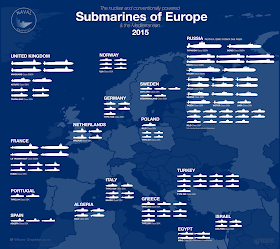 |
| Some of the heaviest surface combatants of Russian Navy today in formation, Marshal Ustinov in the foreground and Peter the Great in the background. |
The U.S. Office of Naval Intelligence (ONI),
published an excellent report accompanied by some very good graphs, about the current and future
capabilities of Russia's maritime forces. ONI's most recent unclassified report on Russia's navy, The Russian Navy - A Historic Transition, looks historically and currently at the
role played by Russian
Naval forces. It is the first such report discussing the
Russian Federation Navy by ONI since the seventh and last issue of
Understanding Soviet Naval Developments
published in 1991. Moreover, the U.S. Office of Naval Intelligence (ONI) is
making available publicly two great tables, the one about the Russian Major Navy Forces by Fleet, Russian Major Navy Forces by Fleet (Continued) and Russian Navy New Constructions.






































